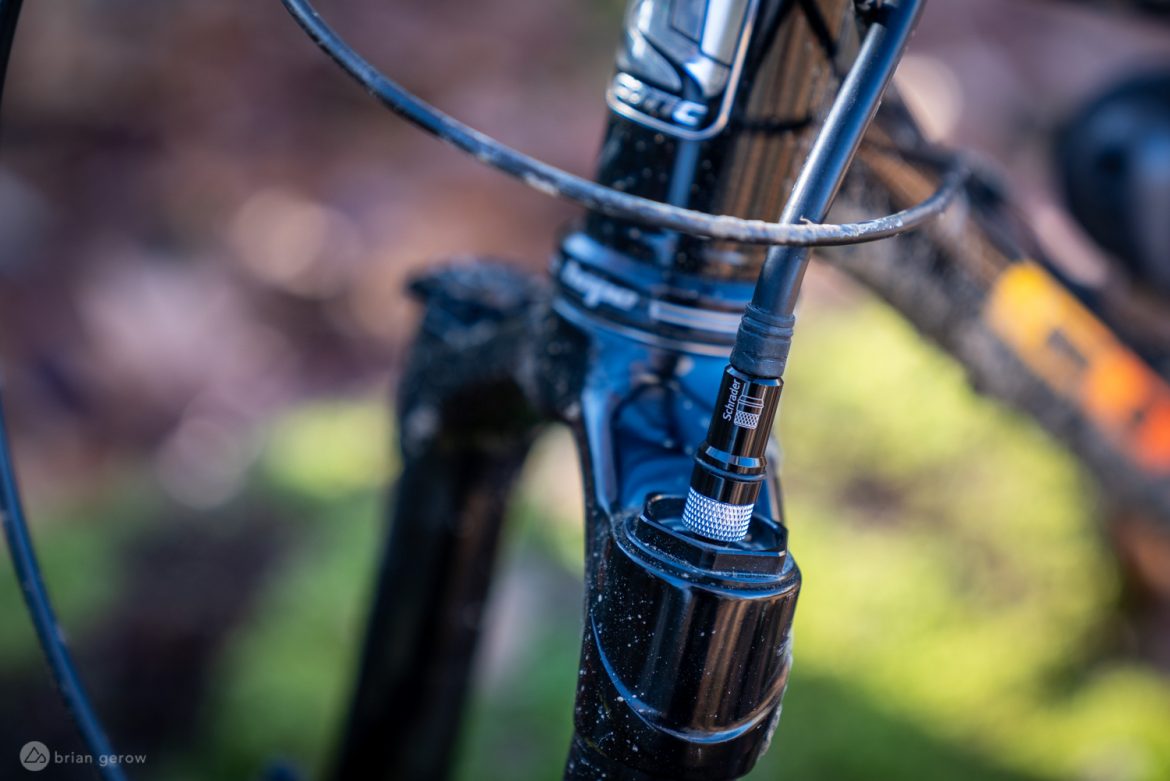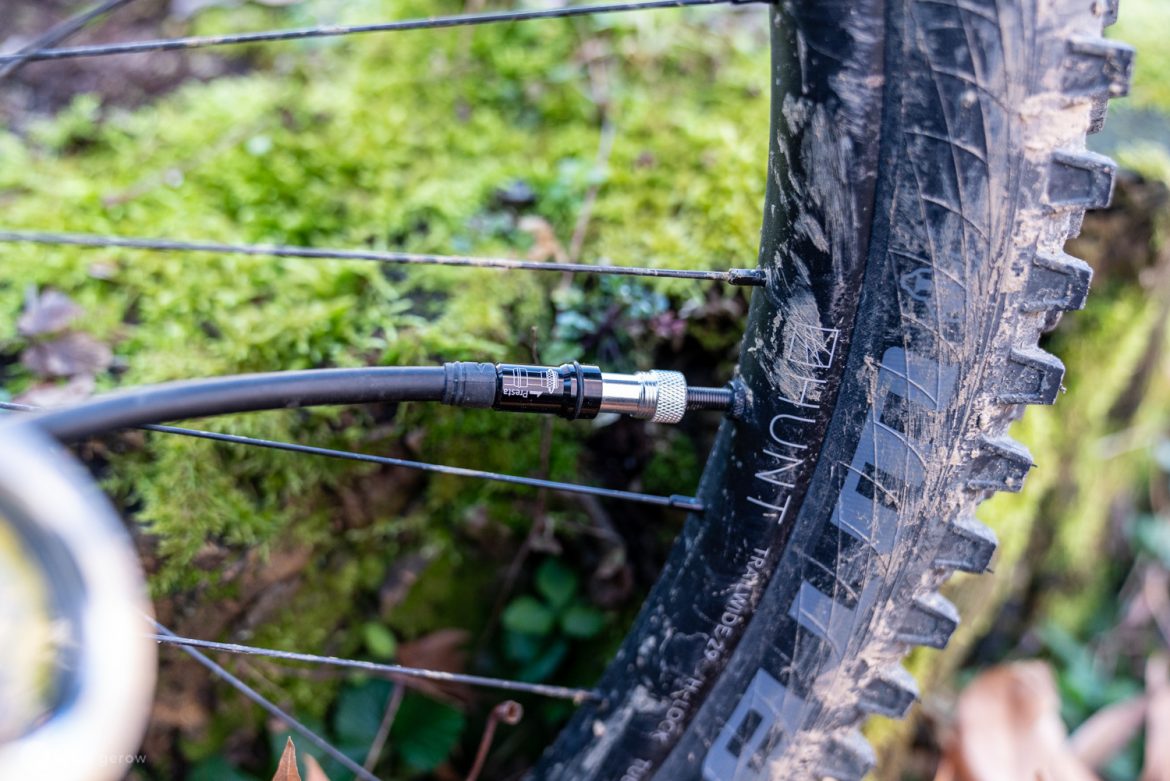
Harmonizing the windy bits of our bikes can be a meticulous ordeal, and the Shock ‘N Roll hand pump from Topeak aims to simplify the process. The 300 PSI (20.7 BAR) pump is designed to inflate shocks, forks, and tires alike with a simple twist of the main shaft to shift between functions. At 270g, this may not be the pump folks pack along for every ride, but when it’s time to dial in new tires or set up suspension components the two-in-one system seems smart. Is it though?
The shiny chassis of the Shock ‘N Roll pump has a sturdy build quality that’s ready to inflate a few seasons of fun. The pressure gauge markings are bright and easy to read against the black background. A threaded chuck, or hose head, fits both Presta and Shrader valves by simply sliding the threaded sheath into the appropriate position for a given valve type. Like any other suspension pump, there is a pressure release valve at the base of the hose so your shock can exhale to the desired spring rate.
Since 3-5 PSI will make a notable difference in the way a suspension component behaves and is even more noticeable in a tire, the Shock ‘N Roll display markings don’t offer adequate precision. If you need exactly 70 PSI in a fork, this thing will come close, but if you know that 73 PSI feels better it is impossible to gauge when the pump has reached that finer mark. For discerning riders, the space between those crucial numbers needs to be clear, and with 10 PSI between measured markings on the gauge, this is not the pump for precision. Inaccuracy is not a failing of this pump in particular, but inherent to analog gauges more generally. While most pumps are not 100% accurate, a digital gauge will allow for a finer degree of precise measurements.

The pump’s threaded Presta/Shrader chuck works well to hold its hose in place, and it would be nice to see a secondary release valve on the next iteration. A two-step release valve, like the one on a Syncros SP 1.0 pump, disengages the shock or fork air-valve before removing the pump’s hose from the Shrader stem, decreasing the amount of air loss.
When pumping up tires, the Shock ‘N Roll performance is identical to its shock-inflating utility; the pump works well for a general setting but lacks precision. I would only ride with a pump this heavy and bulky while setting up new components or bikes, when exact measurements are essential. Paired with the right digital gauges it would be possible to locate precise pressures, though alone the pump falls short.
Like any tire pump, you can inflate shocks and forks with the handle in the “tire” position to speed up the process, then switch it to “shock” for the final strokes. This is a convenient way to hasten suspension inflation the first time around.
Conclusion

While the Shock ‘N Roll will inflate and deflate things as promised, its vague pressure readings may be an impasse for some folks. Given the undeniable difference a few PSI can make in a tire or suspension component, precise digital gauges make a lot more sense than the 10 PSI increments on most analog pumps like this one. If you’re simply searching for a way to add and remove air on the trail this pump can do that well, and if you’re after precise measurements a digital pressure gauge that reads both tires and suspension, like the Topeak Twinguage D2, will be a worthwhile addition.























0 Comments